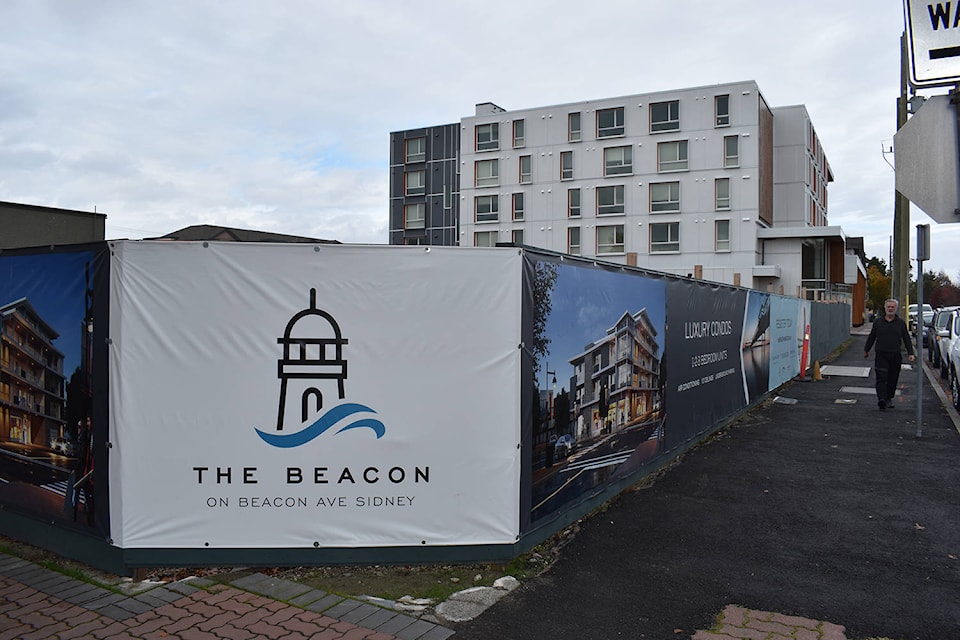A new report finds most Sidney households do not earn enough to purchase local real estate or rent.
These findings appear in the Sidney Housing Needs Assessment before the council’s committee-of-the-whole Monday night, Nov. 4. Council commissioned the report combining demographic and economic data from federal, provincial and regional sources as a basis for Sidney’s Official Community Plan (OCP) review.
The report broadly confirms many of Sidney’s 11,130 residents living across 5,606 households find housing unaffordable, while raising questions about past and current housing policies. This last point appears especially stark in comments from Sidney staff, which say that the “majority of housing being built [in Sidney] is directed at wealthier households.”
RELATED: Sidney to learn about housing needs later this fall
RELATED: Our Place Society would like to see modular housing in Saanich Peninsula communities
Looking at the big picture first, the report finds Sidney is aging faster and growing slower than the rest of the region, with a median age of 58 years (compared to 45 for the Capital Regional District) and a population growth of five per cent (compared to 11 per cent for the Capital Regional District). The report also finds that Sidney’s median income of $64,151 is “slightly lower” than the median income of $69,642 for the region as a whole.
RELATED: Four-storey Sidney condo proposal moves ahead despite resident concerns
The report finds most median incomes in Sidney are not high enough to afford home-ownership when measured against 2019 average sales prices from BC Assessment.
“The only household type that did not experience an affordability gap at the median income was couples with children in relation to one-to-two-bedroom units,” it reads.
This statement means that all other categories experience varying degrees of housing unaffordability. The gap appears most pronounced for individuals living on their own or with roommates. Depending on the unit, the gap ranges between $2,729 for three bedrooms and $647 for a one-bedroom apartment.
By way of background, single individuals living on their own or with roommates represent the most common household in Sidney at 36 per cent, followed closely by couples without children (also around 36 per cent); couples with children (14 per cent); and single-parent families (seven per cent). So just under 80 per cent of all Sidney households consist out of one or two people, adults or otherwise.
As for existing homeowners, 15 per cent owner households say they spend more than 30 per cent of their income on shelter.
Affordability gaps also appear when it comes to rentals. The report finds that individuals living on their own or with roommates and single-parent families would not be able to afford appropriate units in the primary rental market based on 2018 median rents. For example, if the affordable monthly shelter cost is $745 for individuals making a median income of $29,805, they would find themselves short $715 short of being able to afford a two-bedroom unit and $350 short for a one-bedroom unit.
Looking ahead, the report finds the “biggest unmet needs in Sidney are affordable options for individuals living on their own and families” in finding that the community needs at least 597 new rental units with 400 units below rental market levels.
While the report acknowledges progress in changing the housing supply through incentives and updated policies, Sidney’s low rental vacancy rate, which has been close to zero since 2015, and high housing costs, confirm the unmet need for affordable, diverse housing options, it reads.
“Most new and anticipated units are higher-end ownership options geared towards retirees,” it reads. “While the housing stock in Sidney is growing, more focused efforts in targeted areas are likely needed to bridge the gap that already exists and will likely grow in the future,” it adds.
Like us on Facebook and follow @wolfgang_depner
